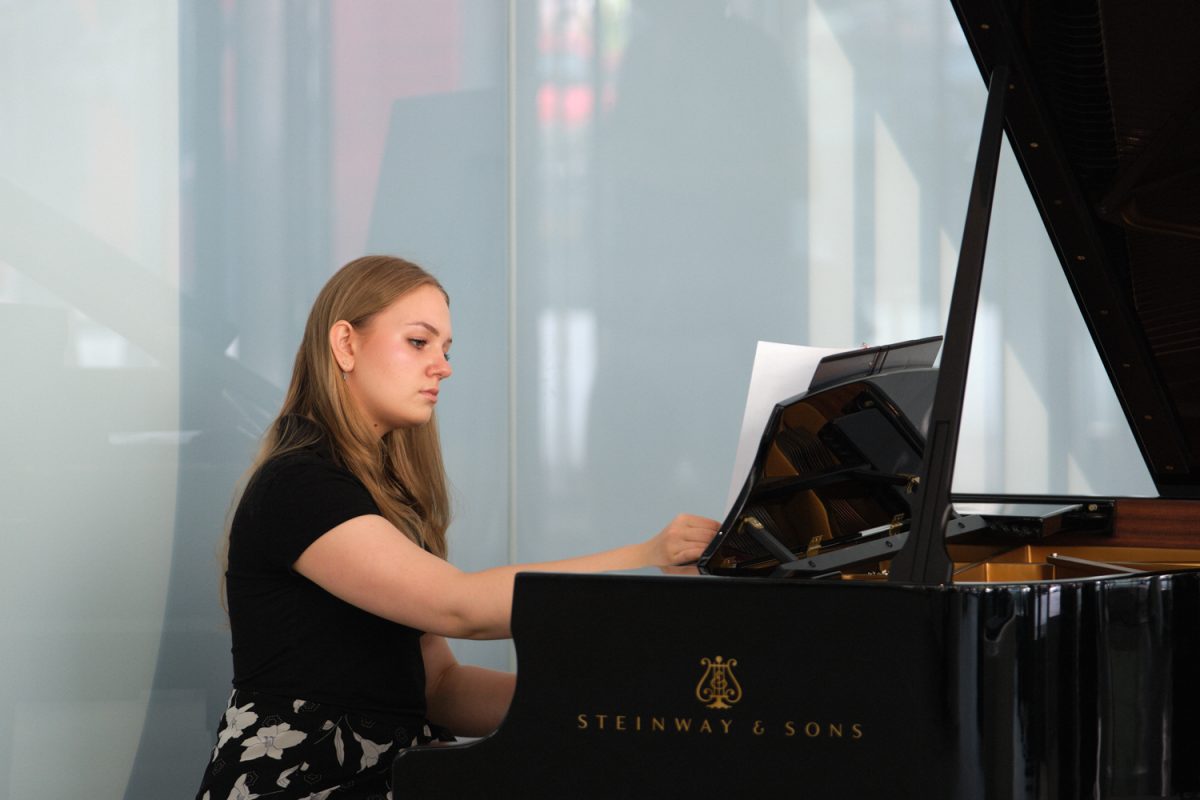Earlier this month, in the lobby of the Paulson Center, NYU faculty and local pianists collaborated to perform French composer Erik Satie’s famed “Vexations” — and they performed it 840 times.
Organized by Joan Forsyth and William Anderson, the spectacle was a part of the Village Trip Festival, an ongoing celebration of the arts and activism in Lower Manhattan. The performance marked the 60-year anniversary of its original 1963 production by John Cage, a prominent American composer and music theorist, at the Pocket Theatre.
“We were thrilled when Joan and Bill proposed commemorating the premiere of ‘Vexations’ with a performance at NYU,” said fellow performer and Steinhardt Director of Piano Performance Manuel Laufer.
With Paulson’s lobby being fully open to the public, Laufe said they found the composition to be “a wonderful opportunity to bring together students, faculty, alumni and guest artists to present a very unusual, thought-provoking piece.”
Written in the 1890s, an inscription on the piece reads, “In order to play the motif 840 times in succession, it would be advisable to prepare oneself beforehand, and in the deepest silence, by serious immobilities.” Satie, known for his avant-garde musical aesthetic, had a major influence on art movements of the 1960s — specifically in Greenwich Village.
Marilyn Nonken, Steinhardt chair of the Department of Music and Performing Arts Professions, said that the piece “stands as a model for a lot of experimentation” and is “sort of a historic piece for being so incredibly strange.” Many question if Satie intended for “Vexations” to even be performed.
“He was irreverent and quirky, and loved jokes and pranks,” Laufer said, who stayed for all 14 hours and 30 minutes of the performance. “Satie might have been very amused by the thought that, roughly 130 years after this music was written, we would be putting this much energy into repeating this piece exactly 840 times. Or perhaps, he would have adored the idea.”
Nonken kicked off the piece at 6 a.m., beginning the first of her 35 performances before the next pianist took over. Speaking of her experience, she said that while many performers find the repetition frustrating, she found it quite a reflective and peaceful experience.
“I was sad when it was over,” she said.
Upon first hearing of this feat, the idea of repeating a work such a ridiculous amount of times sounds mind-numbingly uninteresting. However, Laufer expressed a similar sentiment to Nonken.
“The music becomes something of a sonic background, and what starts to grasp your attention is the individuality of each performer,” he said. “It was actually quite exciting when people lost concentration or made mistakes, and reminded you of the humanity of it all.”
They showed that even in repetition, there is room for variation and playfulness. Whether intentional or not, the piece evolved as time went on.
“In the end, the whole endeavor highlights the fact that no matter how hard you try, repeating things the exact same way is not really possible,” he said.
Throughout the day, an audience formed from passersby stumbling upon the piece in progress, with people filing in and out of the reverberant Paulson lobby. Some sat down to read, some worked and others just took a rest.
“Those were the beautiful moments that gave the performance variation,” Nonken said. “When a crowd of people comes through and listens, or a child runs up to the piano or when there is a change from one pianist to the next, those are the dramatic moments. The piece provides the environment for the drama.”
Contact Zoe Singh at [email protected].


























































































































































